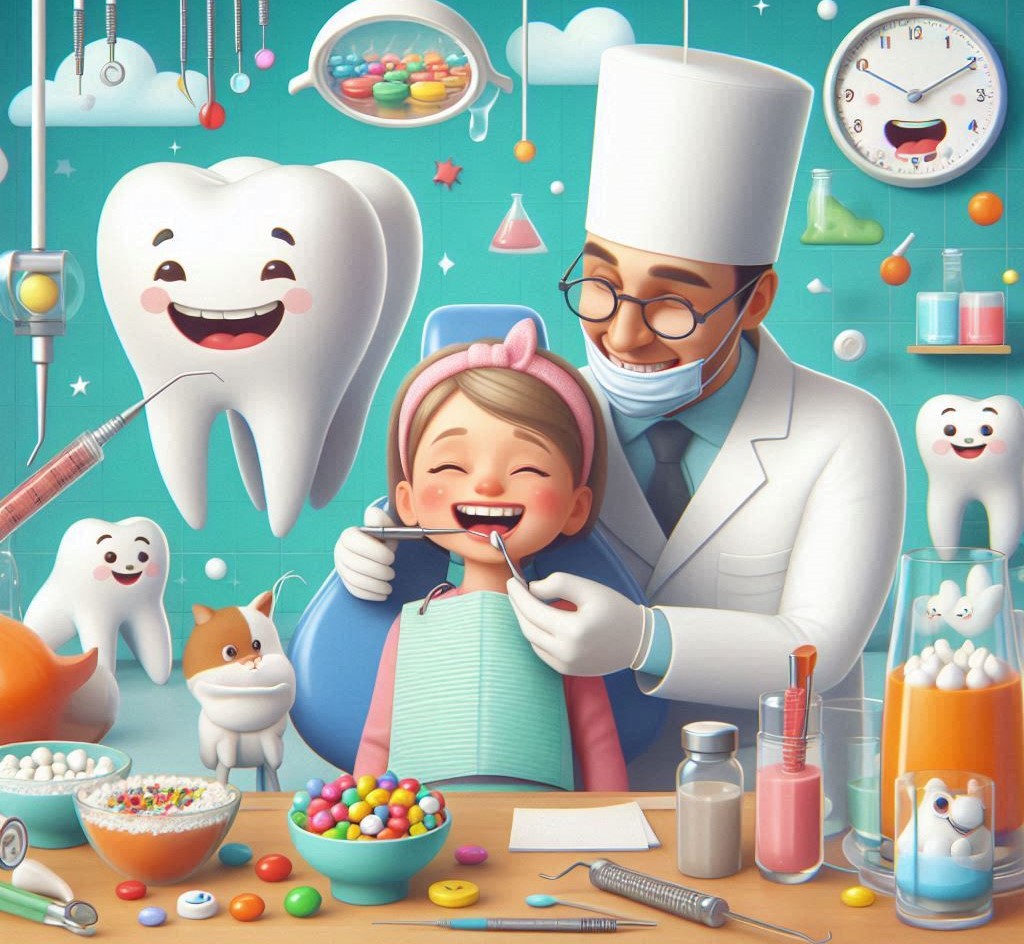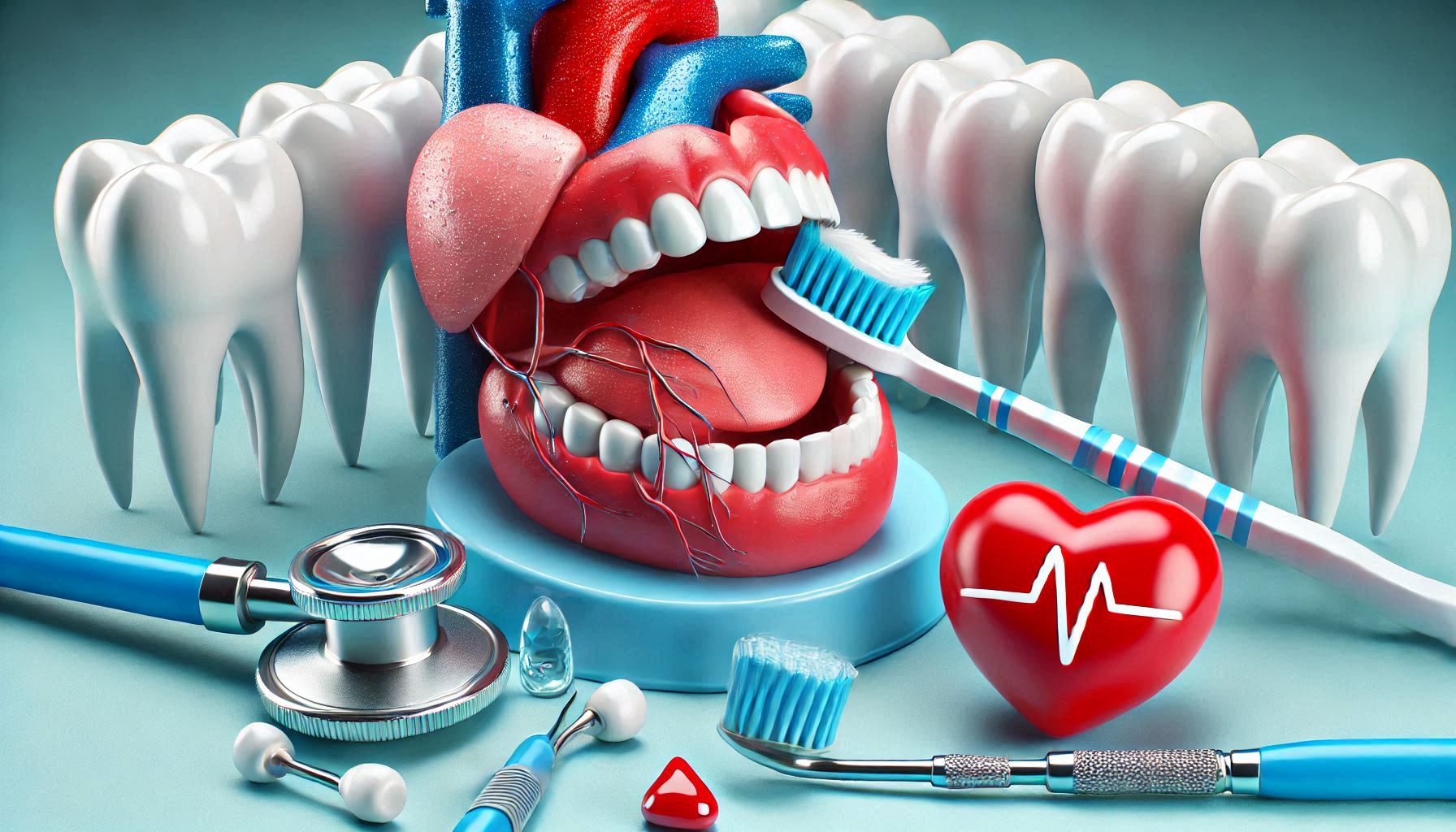Introduction
Orthodontics is a specialized branch of dentistry focused on diagnosing, preventing, and treating dental and facial irregularities, including misaligned teeth and jaws. Early orthodontic treatment, typically undertaken during childhood, refers to interventions that occur before a child’s permanent teeth have fully erupted. This approach aims to address issues when the bones and teeth are still growing, making it possible to guide proper development and prevent more complex problems in the future.
The timing of orthodontic treatment can have a significant impact on the effectiveness, duration, and cost of the care provided. When treated early, orthodontic issues can be corrected with less invasive procedures, potentially reducing the need for more extensive treatments later in life. In this article, we will explore the benefits of early orthodontic treatment and why it matters to both children and adults in the long term.
What is Early Orthodontic Treatment?
Early orthodontic treatment is a two-phase approach aimed at addressing developing orthodontic issues at an early age, usually around age 7 or 8. It is during this time that the first permanent molars and incisors typically begin to emerge, allowing orthodontists to evaluate the alignment of the teeth and jaws. Early intervention focuses on correcting problems before they become more severe, ensuring a better outcome as the child matures.
Age Guidelines and Overview of Early Treatment:
- Typically, orthodontists recommend an initial consultation around age 7.
- Not all children need early treatment, but evaluation at this age allows orthodontists to assess the development of the teeth, jaws, and facial structures.
- Treatment at this stage may involve guiding the growth of the jaw, addressing bite problems, or making room for permanent teeth to erupt properly.
Early treatment may involve appliances such as expanders, space maintainers, or partial braces. The goal is to address issues such as crossbites, overcrowding, or teeth that are coming in out of order. Correcting these issues early can simplify later treatments and improve overall oral health.
Why Early Intervention is Important
Timing plays a critical role in the success of orthodontic treatment. The primary advantage of early orthodontic intervention is that it takes advantage of the natural growth and development of a child’s mouth. The bones and teeth are more malleable during childhood, making it easier to guide their development and address issues before they become entrenched.
The Role of Growth and Development in Orthodontic Treatment: Children’s jaws and bones are still developing, which makes it easier to manipulate and reshape them through early orthodontic treatment. By using appliances that guide jaw growth, orthodontists can correct misalignment and prevent more severe problems from occurring later.
For example, if a child has a crossbite (where the upper teeth bite inside the lower teeth), early treatment can help realign the jaw to ensure that the teeth grow in the right position. Left untreated, a crossbite can lead to tooth wear, gum recession, and even jaw joint issues.
Benefits of Addressing Issues Early:
- Reduced Complexity: Treating problems early may reduce the complexity of later treatment, potentially eliminating the need for extractions or invasive surgery.
- Cost-Effective: Early intervention can reduce overall treatment costs by addressing issues before they worsen.
- Better Results: Addressing orthodontic problems early allows for better long-term results, such as more aligned teeth and jaws that function better.
Types of Common Issues Addressed Through Early Orthodontics
There are several orthodontic issues that are often best addressed with early treatment. These include:
- Crossbites: A crossbite occurs when the upper teeth bite inside the lower teeth, either in the front or the back of the mouth. If left untreated, it can cause asymmetric jaw growth, gum recession, or tooth wear. Early treatment often involves the use of expanders to correct the jaw position and realign the teeth.
- Overbites and Underbites: An overbite occurs when the upper teeth protrude over the lower teeth, while an underbite is when the lower teeth are positioned ahead of the upper teeth. Both conditions can lead to functional problems with biting and chewing. Early treatment with appliances or partial braces can help to align the teeth and improve the bite.
- Crowded Teeth: Crowding occurs when there isn’t enough space in the mouth for all of the teeth to fit properly. Early intervention can help create space for permanent teeth to emerge in the correct positions.
- Gaps Between Teeth: Spaces between teeth, especially in the front of the mouth, can cause aesthetic concerns and may lead to functional problems. Early treatment can help reduce gaps and guide the eruption of permanent teeth.
- Thumb Sucking and Pacifier Use: Prolonged thumb sucking or pacifier use can lead to malocclusion (misalignment of teeth) or bite issues. Early intervention helps to break these habits before they cause long-term problems.
- Early Loss of Baby Teeth: When children lose their baby teeth prematurely, it can lead to tooth misalignment and uneven growth. Space maintainers can be used to hold open the space until the permanent teeth are ready to come in.
The Phases of Early Orthodontic Treatment
Orthodontic treatment is typically conducted in two distinct phases, with Phase 1 focused on early intervention, and Phase 2 addressing the refinement of treatment. These two phases work together to ensure the most effective and least invasive treatment possible.
Phase 1: Early Intervention (Ages 7-10)
Phase 1 orthodontic treatment is often recommended between the ages of 7 and 10 when the child still has a mixture of primary (baby) teeth and emerging permanent teeth. This stage focuses on correcting significant issues that could impact the child’s ability to speak, chew, and breathe properly. The goal is to guide jaw growth and create enough space in the mouth for the permanent teeth to come in correctly.
During Phase 1, orthodontic appliances such as expanders, retainers, or partial braces may be used to:
- Widen the upper jaw (palate expansion).
- Correct jaw misalignments.
- Improve bite issues, such as crossbites, overbites, and underbites.
- Prevent or eliminate harmful habits like thumb sucking.
These treatments are especially effective in addressing issues that are related to the growth of the jaw, which is why the earlier the intervention, the better the chance of minimizing more invasive treatment later. The orthodontist will also use this phase to monitor how the child’s teeth and jaws are developing to determine if Phase 2 is necessary.
Phase 2: Comprehensive Treatment (Ages 11-15)
Phase 2 typically begins once most of the child’s permanent teeth have come in, usually between the ages of 11 and 15. At this stage, the main focus is on the alignment and refinement of the teeth. Traditional braces, ceramic braces, or clear aligners (like Invisalign) are often used during this phase to correct the positioning of the teeth and ensure proper bite alignment.
The treatments in Phase 2 are more intensive and targeted at fine-tuning the results achieved during Phase 1. By this time, the bone structure and jaw alignment have largely stabilized, and the focus shifts to ensuring the permanent teeth are positioned properly for long-term oral health.
While Phase 1 typically lasts for about 6-12 months, Phase 2 treatment can take anywhere from 18 months to 3 years, depending on the severity of the issues and the patient’s compliance with their treatment plan. The combination of both phases usually leads to more efficient, effective treatment with better overall outcomes.
The Benefits of Early Treatment (Continued)
The importance of early orthodontic treatment extends beyond mere aesthetics. Addressing orthodontic issues early can lead to both functional and psychological benefits for children, as well as long-term oral health advantages. Here’s a more in-depth look at some of the benefits:
Improved Oral Health and Hygiene
Straight teeth are much easier to clean than crooked or crowded teeth. A key benefit of early treatment is that it helps children maintain better oral hygiene. When teeth are properly aligned, it’s easier to brush and floss effectively, which helps prevent cavities, gum disease, and other oral health problems. Crowded teeth or gaps can lead to trapped food particles and plaque buildup, which are difficult to remove and increase the risk of dental issues.
In addition, some types of early treatment, such as palate expanders, help create more space in the mouth, allowing the permanent teeth to come in with better spacing. This reduces the likelihood of future dental problems that could require even more complex procedures.
Prevention of Long-Term Dental Problems
Early intervention can prevent a variety of serious dental issues from developing. For example, an untreated overbite or underbite can lead to abnormal wear on the teeth, difficulty chewing, and jaw pain. When left untreated, these issues can also lead to temporomandibular joint (TMJ) disorders, which affect the jaw muscles and joints.
By addressing these problems during early orthodontic treatment, orthodontists can avoid the need for more invasive procedures in the future, such as jaw surgery or tooth extractions. Correcting bite issues early can improve the function and health of the jaw, teeth, and surrounding tissues.
Less Invasive Procedures Compared to Late Treatment
As mentioned earlier, early treatment is typically less invasive than waiting until later in life to address orthodontic issues. For example, a child who receives early treatment for overcrowding may not require extractions later on to make room for permanent teeth. Similarly, early intervention for a crossbite or overbite can help correct the jaw position without the need for surgery.
By addressing these problems while the teeth and jaws are still growing, orthodontists can use less complicated methods—such as expanders or retainers—to guide the child’s development. These treatments are often more comfortable and less traumatic than the more involved procedures that may be necessary if treatment is delayed.
Enhanced Self-Esteem and Confidence
Another significant benefit of early orthodontic treatment is the positive impact it can have on a child’s self-esteem and confidence. Children with misaligned teeth or visible dental issues often feel self-conscious about their appearance. Addressing these issues early can help them feel better about their smile and improve their confidence both in social situations and academic settings.
For instance, children who undergo Phase 1 treatment with clear aligners or retainers may feel more confident knowing that they’re actively improving their appearance, which can boost their social interactions and overall well-being.
Shortened Overall Treatment Time
Although early orthodontic treatment requires two phases, the total time spent wearing braces or undergoing orthodontic care can be shorter compared to waiting until adolescence or adulthood to start treatment. Correcting bite and alignment issues early can prevent the need for more extensive and longer treatments in the future. This is especially important as children grow into teenagers, as their bones and teeth become harder to adjust. In many cases, early treatment results in more efficient Phase 2 care and a smoother overall process.
The Risks of Delaying Treatment
While many children benefit from early orthodontic intervention, some parents may be hesitant to pursue treatment due to cost concerns, misconceptions about the need for early care, or simply because the child’s issues don’t seem immediately severe. However, delaying treatment can lead to several risks:
Increased Severity of Problems
Some orthodontic issues, if left untreated, can worsen over time. For example, a child with a developing overbite or underbite may find that their condition becomes more pronounced as they grow. This can make future treatment more complex, requiring more aggressive approaches such as jaw surgery or the extraction of teeth.
Crowded teeth or crossbites that aren’t addressed early can lead to lasting problems with tooth wear, gum recession, and bone loss. The longer these issues persist, the harder they are to correct.
Longer Treatment Time
If a child waits until adolescence to begin orthodontic care, treatment may take longer. By this time, the bones in the jaw and the teeth have solidified, making them more difficult to move. The need for tooth extractions, surgical procedures, or more intense braces can result in a much longer treatment timeline than would have been necessary if intervention had been done earlier.
Higher Costs in the Future
Delaying orthodontic care can ultimately result in higher costs. More invasive procedures, such as surgery or extractions, are often required when treatment is delayed, which increases both the financial and time investment involved. Early intervention is typically more cost-effective and can prevent the need for costly dental procedures later in life.
Psychological Impacts of Delayed Treatment
Beyond the physical and financial aspects, delaying orthodontic treatment can have psychological consequences. Children who experience discomfort or feel self-conscious about their teeth may suffer from a lack of self-confidence, potentially affecting their social development and mental well-being. The sooner these issues are addressed, the less likely the child will experience negative emotional or psychological impacts due to misaligned teeth.
How to Determine If Early Orthodontic Treatment is Necessary
Determining whether early orthodontic treatment is needed requires careful observation and professional evaluation. Parents should be aware of common signs that might indicate a need for early intervention:
- Difficulty Chewing or Biting: If a child consistently has trouble chewing or biting food, it could be a sign of a misaligned bite.
- Thumb Sucking or Pacifier Use: Prolonged thumb sucking or pacifier use can lead to bite problems and jaw misalignment.
- Misaligned Teeth or Jaws: Obvious misalignment of the teeth or jaws, especially if the upper and lower teeth don’t come together properly, may indicate a need for treatment.
- Speech Problems: If a child has difficulty pronouncing words or forming sounds correctly, it could be related to the alignment of their teeth and jaws.
Orthodontists often perform early screenings, beginning at age 7, to identify any potential issues that may require intervention. Regular visits to the pediatric dentist also ensure that any concerns are flagged early.
What Parents Need to Know About Early Orthodontic Treatment
Understanding the details of early orthodontic treatment can help parents make informed decisions about their child’s dental care.
Costs and Financial Considerations
The cost of early orthodontic treatment varies depending on the complexity of the issues being addressed and the types of appliances used. However, many parents find that the investment in early treatment is worthwhile due to the long-term benefits.
Insurance Coverage
Insurance coverage for orthodontic treatment is an important consideration. Many dental insurance plans cover a portion of the cost of early treatment, but it’s essential for parents to check with their insurance provider to understand the details of their coverage.
Common Concerns
Parents often have concerns about the cost, discomfort, or necessity of early orthodontic treatment. An orthodontist can address these concerns by explaining the potential benefits and walking through the treatment plan step by step.
Case Studies and Examples
Case 1: Early Intervention for Crossbite
A 7-year-old child presented with a crossbite, where the upper teeth bit inside the lower teeth, causing noticeable jaw misalignment. The orthodontist used a palate expander for Phase 1 treatment, which realigned the jaw and corrected the bite. The child avoided the need for jaw surgery later in life and had a smooth transition into Phase 2 treatment.
Case 2: Treating Crowding Early
A child with significant dental crowding underwent early orthodontic intervention with expanders and partial braces, creating enough space for permanent teeth to emerge in the correct positions. By the time the child entered Phase 2, their teeth were already in better alignment, reducing the duration and intensity of the later treatment.
Conclusion
The benefits of early orthodontic treatment are clear. By addressing dental issues early on, children are more likely to experience smoother, less invasive treatments, with better long-term results. Early intervention also promotes better oral health, improves self-esteem, and ensures a more comfortable and functional bite as the child grows. Timing truly matters when it comes to orthodontic care, and getting ahead of potential issues can save time, money, and discomfort down the road.
Orthodontic treatment is not just about a beautiful smile—it’s about fostering lifelong oral health and well-being. Parents should not hesitate to consult with an orthodontist to evaluate whether early intervention is the right path for their child.
SOURCES
American Association of Orthodontists. (n.d.). When to see an orthodontist. Retrieved from https://www.aaoinfo.org/
American Dental Association. (2021). Orthodontics: Braces, invisalign, and more. Retrieved from https://www.ada.org/en/member-center/orthodontics
Bishara, S. E. (2001). Impact of early treatment on the development of the dentition. Seminars in Orthodontics, 7(3), 161-168.
Proffit, W. R., Fields, H. W., & Sarver, D. M. (2019). Contemporary orthodontics (6th ed.). Elsevier.
O’Brien, K., Wright, J., Conboy, F., Sanjurjo, A., & Wren, M. (2003). The effectiveness of interceptive orthodontics: A systematic review. European Journal of Orthodontics, 25(4), 423-432.
Sharma, P. (2017). Timing of orthodontic treatment: Early or late. Journal of Indian Orthodontic Society, 51(2), 79-84. https://doi.org/10.5005/jp-journals-10021-1287
Wright, J. T., & Trotman, C. A. (2000). Early orthodontic treatment: The case for intervention. Journal of Clinical Orthodontics, 34(9), 539-546.
Pancherz, H. (1997). The effect of early orthodontic treatment on the development of the dentition and occlusion. Journal of Clinical Orthodontics, 31(5), 279-285. https://doi.org/10.1016/S0300-5727(97)80007-2
Gonzalez, C., & Villanueva, M. (2018). The role of interceptive orthodontics in the prevention of malocclusion development. International Journal of Dentistry, 2018, 1-7.
Denny, J., & Williams, D. (2015). Preventive and interceptive orthodontic care: A review of the literature. Australian Orthodontic Journal, 31(2), 98-105.
Bishara, S. E., & Anderson, L. K. (2010). Interceptive orthodontics. Seminars in Orthodontics, 16(4), 196-202.
HISTORY
Current Version
February, 10, 2025
Written By
SUMMIYAH MAHMOOD




